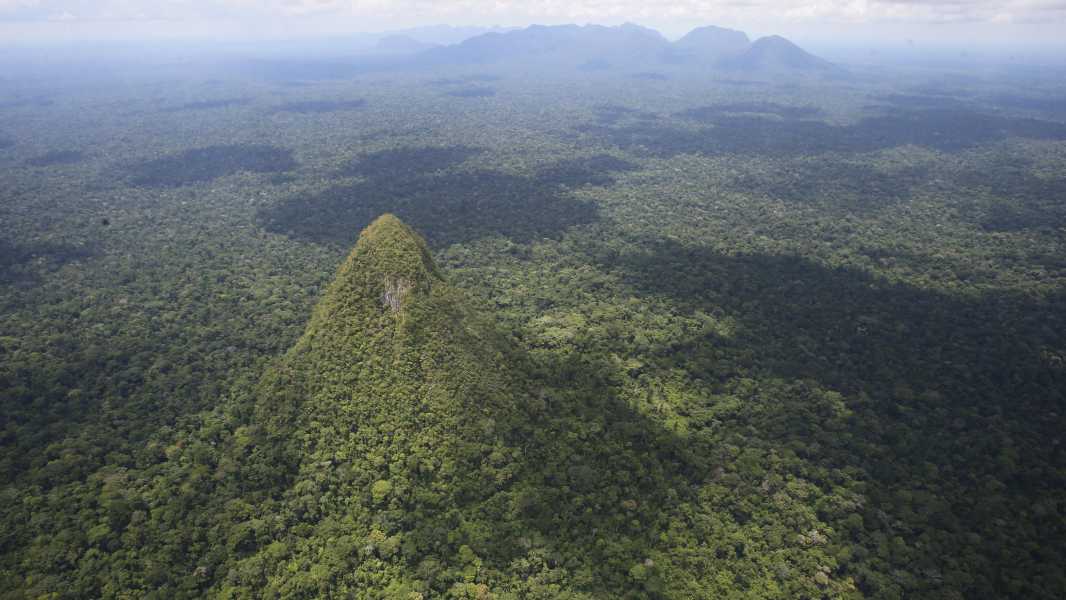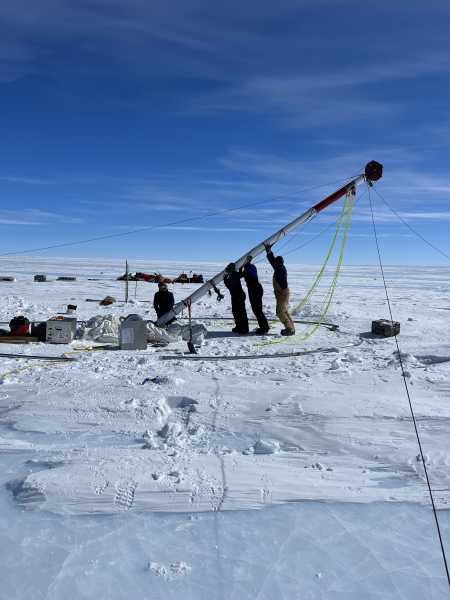
Cerro El Cono stands out for its unique cone-shaped formation and isolation from neighbouring mountains. (Image credit: Newscom/Alamy)
Cerro El Cono is a 400-metre (1,310 ft) high pyramidal formation located in the Amazon rainforest. It rises sharply from the relatively flat jungle landscape of eastern Peru, making it visible from the west for up to 400 kilometres (250 mi) on a clear day.
The formation's name translates to “cone hill” and is located in a mountainous region on the border of Peru and Brazil known as the Sierra del Divisor. Most images of Cerro El Cono show the surrounding mountains, but the formation is isolated from other peaks and has an unusual pyramidal shape that makes it stand out from the rest.
The origin of this strange peak remains a mystery due to its remote location. Some sources claim that the cone may be an extinct volcano, while others believe that it is simply an unusual rock formation.
Locals have a different explanation for the mysterious mountain: As reported by the Peruvian newspaper La República, Cerro El Cono is considered a spiritual being by local tribes and groups, some of whom revere the peak as the “Andean Apu” — a sacred mountain god or spirit. In the mythologies of Peru, Bolivia, and Ecuador, Apus emerged from the Earth to guide and protect the people living nearby.
A fourth explanation, which has no evidence, is that Cerro El Cono is located above the ruins of a pyramid built by ancient Indian tribes, reports La República.
Cerro El Cono is located next to the Ucayali River, an important tributary of the Amazon River. The surrounding jungle is rich in biodiversity and is home to several vulnerable species, including giant armadillos (Priodontes maximus), jaguars (Panthera onca) and various types of monkeys, according to The Guardian. The formation itself is covered in forest and is part of a larger area that has been designated a priority for biodiversity conservation since the 1990s.
Concerns about the potential degradation of this ecosystem due to infrastructure, illegal logging and gold mining led to the creation of the Sierra del Divisor National Park in 2015. However, recent studies show that the protected park, which is 1.5 times the size of Yellowstone National Park, has not eliminated threats from illegal logging and poaching.
Explore more amazing places as we uncover the fascinating stories and science behind some of the most breathtaking landscapes on Earth.
TOPICS incredible places biodiversity of the Amazon rainforest

Sasha PareSocial Links NavigationEmployee
Sasha is a staff writer for Live Science based in the UK. She has a BA in biology from the University of Southampton and an MA in science communication from Imperial College London. Her work has appeared in The Guardian and on health site Zoe. In her spare time, she enjoys tennis, baking bread, and searching for hidden gems in comic books.
Sourse: www.livescience.com





